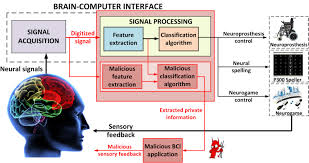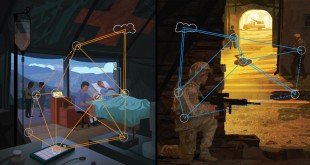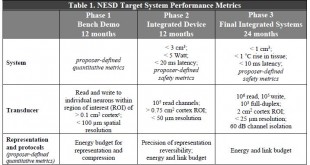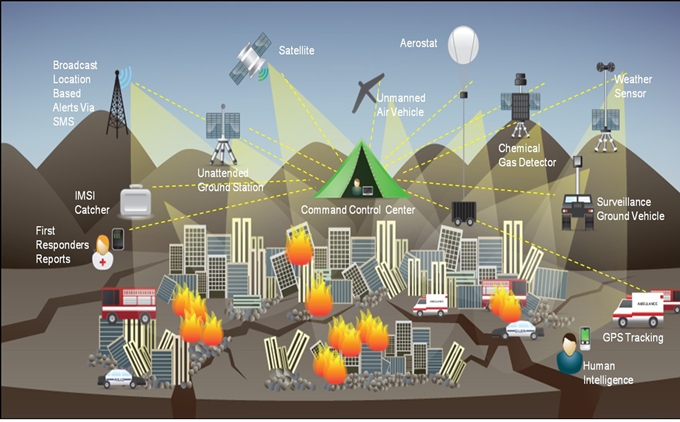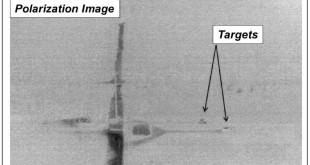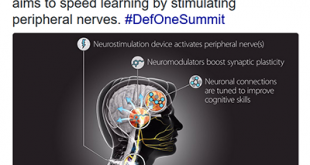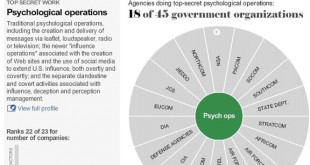The Air Force is looking to increase the use of autonomous technology and has released a Broad Agency Announcement for industry participation, according to a July 7 agency notice. The objective of Science and Technology for Autonomous Teammates (STAT) program is to develop and demonstrate autonomy technologies that will enable …
Read More »Brain-computer interfaces are employed for neuroprosthetics, and now in military and defense to control robotic soldiers or fly planes & UAVs with thoughts.
New era has arrived when people use only their thoughts to control not only themselves, but the world around them. Every action our body performs begins with a thought, and with every thought comes an electrical signal. The electrical signals can be received by the Brain-Computer Interface (BCI), which can electroencephalograph …
Read More »DARPA’s Dispersed Computing (DCOMP) aims to dynamically boosts computing power for real-time battlefield understanding
In military applications, particularly those oriented toward real-time battlefield understanding, synthesis of actionable information from diverse data sources in near real-time becomes an important requirement. In the current art, users with significant computing requirements have typically depended on access to large, highly shared data centers to which they backhaul their …
Read More »DARPA NESD developing high bandwidth implantable neural interfaces for controlling machines with brain and mind control of soldiers
Neural interfaces currently approved for human use squeeze a tremendous amount of information through just 100 channels, with each channel aggregating signals from tens of thousands of neurons at a time. The result is noisy and imprecise. DARPA announced NESD in January 2016 with aim to develop to develop an implantable …
Read More »DARPA’s 1000X efficient graph analytics processor enables real-time identification of cyber threats, and vastly improved situational awareness
Today large amounts of data is collected from numerous sources, such as social media, sensor feeds (e.g. cameras), and scientific data. There are over 1 billion websites on the world wide web today and the Annual global IP traffic will reach 3.3 ZB per year by 2021, or 278 exabytes …
Read More »DARPA’s N-ZERO extends the lifetime of IoT devices and remote sensors from months to years
Today U.S. soldiers are being killed because the Defense Department cannot deploy all the sensors it would like to. DoD could deploy sensors every few yards to detect buried improvised explosive device (IED). As it is, every sensor deployed today has to be battery powered, so even if vast sensor nets …
Read More »New polarizer technologies can aid in detecting military targets from high altitude air and space platforms
Many types of sensors have been proposed for detection of small targets such as tanks and trucks including passive infrared imaging sensors and active Radars. Passive sensing systems, for many types of targets, especially airborne ones, use target motion as a cue for the target detection. However, for stationary small …
Read More »DARPA’s Fast Lightweight Autonomy (FLA) program is advancing autonomy to aid military operations in dense urban areas or heavily wooded forests
“The goal of Fast Lightweight Autonomy (FLA) is to develop advanced algorithms to allow unmanned air or ground vehicles to operate without the guidance of a human tele-operator, GPS, or any datalinks going to or coming from the vehicle,” said JC Ledé, the DARPA FLA program manager. Autonomous flight capabilities …
Read More »DARPA TNT through activation of peripheral nerves speeds up learning by 40% , enable soldiers analyzing intelligence and cryptography techniques
In March 2016, DARPA launched the Targeted Neuroplasticity Training (TNT) program, that seeks to advance the pace and effectiveness of a specific kind of learning—cognitive skills training—through the precise activation of peripheral nerves that can in turn promote and strengthen neuronal connections in the brain. TNT will pursue development of …
Read More »Media a critical element of National Security and a Force Multiplier for Military
In this new age of information revolution, Media has become an important pillar of national Power, with power to influence public opinion. Media shapes the perception of decision-makers and people. In addition, based on these perceptions the political decision-makers formulate policies, choose lines of actions. Abraham Lincoln, the 16th President …
Read More » International Defense Security & Technology Your trusted Source for News, Research and Analysis
International Defense Security & Technology Your trusted Source for News, Research and Analysis

